How has the Idea of “Family” Changed on Television since World War II?
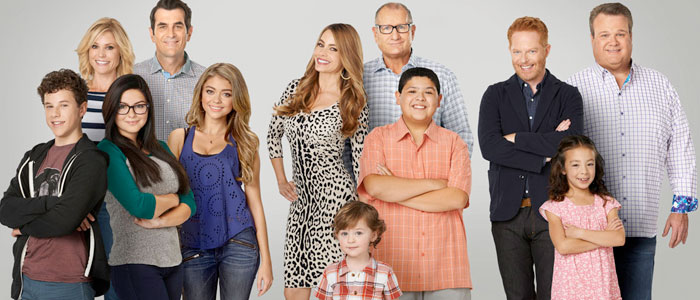
There is no way to deny that the nuclear family once promoted during the Cold War is not the only type of family considered to be the traditional American family. A nuclear family is defined as “a family group that consists of father, mother, and children.” During the Cold War, the nuclear family was the cliche stereotypical family that Americans are known for; the husband has a 9-to-5 job, the mother stays home to clean and cook, and their two children, generally an older boy and a younger girl, play at home. The nuclear family of the 1950s is parallel to television shows that aired during this time period. Shows like “Leave it to Beaver” and “Father Knows Best” emphasize the stereotypical roles and the importance of said roles during this time period.
As time has marched on so has the idea of the nuclear family in America. The roles once drilled into the heads of Americans are now being studied in history classes. From “Full House,” to “The Golden Girls,” to “The Cosby Show,” to “Modern Family,” the portrayal of the the nuclear family has changed, and for the better. Instead of shunning those who do not fit into the outdated definition of “nuclear family,” society has become more accepting and open to other nuclear families, such as same-sex parents or families of different races. As any television viewer can see, the nuclear family has transformed into a more open and accepting definition, allowing everyone to feel apart of a family either on television or within their own family.
What exactly is a “Family?”
How can someone even define the word “family?” Family is actually pretty complex once you think about it. According to Merriam-Webster’s dictionary, there’s eight different definitions of family. That’s a lot of different ways to describe one word. Generally, society thinks the word “family” has only two different definitions. There’s the family that people are born and raised in, with parents and/or guardians, and then there’s the family that people choose; let’s call the two different family types the biological family and the chosen family. It can be said that the only family we have is the family that we choose. People will always have a biological family, whether they know their parents or not, but it is their choice whether or not to acknowledge them. Whether people know it or not, people choose to be apart of their biological families.
Than, there is the chosen family. This family that we choose consists of friends, peers, significant others, and any other person/living being (i.e. a dog or cat) as an important being in our lives. This family is only made up of those who are not related through blood, but through choices. People choose to associate themselves with these people because they meet their personal criteria to be apart of their chosen family. While people have always had this choice, it was not only until recently that the chosen family has been more welcome to television.
Shows such as “The Golden Girls” and “Friends” expose how people can be so close to each other without being in the same gene pool. In an episode of “The Golden Girls,” Rose was in need of triple bypass surgery and when the other girls wanted to be there for her, the doctors said only blood relatives could be there, making Dorothy question the definition of “family.” On the other hand in one episode of “Friends,” Rachel hurts her wrist and uses Monica as her emergency contact. Most people would use their mother or father or guardian, but Rachel chose Monica because Monica and Rachel grew so close to each other they were almost like sisters. Even though these shows aired during different time periods, it’s clear to understand how television is allowing us to see that the chosen family can be even closer to us than the biological family.
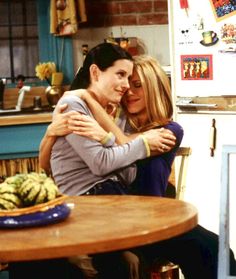
The biological family is known for being the family that will stand next to us through thick and thin. Shows such as “The Brady Bunch” illustrate that family will always have your back, and generally learning a life lesson (at least in the Brady Bunch). In the Brady Bunch Movie, Jan was so envious of the support “Marcia, Marcia, Marcia!” got, she decided to run away. But by running away Jan realized how much she loves and needs her family and how much they love her no matter what and that Marcia wasn’t their favorite (so they want us to think). Yes, biological families can be embarrassing and easily get under a person’s skin, but as T.V. has shown, they want what’s best for each other, even if they do not know what it is. Television shows during the Cold War such as this emphasized how biological families will, for the most part, have each other’s backs for anything. As time marched on, so did this idea, however television began to expose that our biological family is not the only family television showed with this mentality.
Television began allowing us to see how chosen family members feel this way about us too. Just because someone is not a blood relative does not mean they cannot love us like one. “Full House” is a great example of this love. When Danny Tanner’s wife dies, his friend and bother-in-law step up to help Danny raise his three children. Having a friend and a brother-in-law (only family by marriage, so NO blood relation) drop their lives and help their friend/in-law raise three girls is a pretty hard thing to ask, but they did it. In “Friends” they were all friends (excluding Monica and Ross) and all became one loving family that had no relation (yet again excluding Monica and Ross), and bonded over their love for New York City, Central Perk, and being there for one another. In the more recent television series “Parks and Recreation” Leslie Knope and Ann Perkins were strangers who grew so close to one another that they considered each other sisters. While biological family is portrayed on T.V. to always have your back, television has started to show their audience that your chosen family will be along side you no matter what.
To say that there is only a biological family is preposterous; even the biological family can be considered apart of the chosen family. Having the same genetics as someone else does not justify why two or more people should stay in contact. There should be a genuine connection for people to maintain a healthy, wanted relationship. Biological families (the ones on television) will stand next to one another in good and bad times. From “Leave it to Beaver” to “The Brady Bunch” to “Full House” to “Friends” to “Parks and Recreation” the definition of a nuclear family is parallel to their time periods. During the Cold War, “Leave it to Beaver” properly shows us how the nuclear family was promoted; the father would go to work while the mother would stay home and care for the children, just how June Clever, the housewife, cared for the children and Ward Clever would bring home the bacon. This is the traditional nuclear family that was promoted during the Cold War. Since time moves forward, so did the definition of a nuclear family. Flashing forward to present-day 2016, the nuclear family that is promoted today is nothing like “Leave It to Beaver” rather more similar to “Modern Family” (go figure).
“Modern Family” exposes how the American nuclear family has transformed over the years, with the traditional heterosexual married couple and their children but also adding a homosexual married couple and a young Latina women with an older man. These different families have relatively nothing in common except for the love they all share for one another, with can be a micro-chasm for the nuclear families that are in America today. Like all the shows that represent the nuclear families of their time period, “Leave it to Beaver” should be left in the past.
How And Why Has The Nuclear Family Changed?
The nuclear family we all know and love on “Leave It to Beaver” has changed simply because the time period has changed. Different people began to realize that this was not the life they wanted. The traditional nuclear family during the Cold War ingrained the idea that women will amount to nothing but being a housewife while the man had the 9-to-5 job and brought home the money. She would have nobody to rely on but her husband, who would have control over his house, his children, and his wife. As the times changed so did this mentality. In the 1960s women began to realize they could amount to so much more than what society wanted. This thinking started to show through television shows.
T.V. shows such as “Batgirl,” “The Carol Burnett Show,” and, yes,”Charlies Angels,” showed how women began to gain their equality in television and in life. As the first Batgirl, Yvonne Craig set the example for every single female superhero that we know today, but also showing to women across the nation that they don’t need a man to fight their battles. Carol Burnett got her own television show! Yes, there were other supporting (and male) characters but it was her show. Right after the 1950s and the “housewife” mentality stage of American history, how many women had their own television show? Not to mention the gorgeous and crime-fighting trio of “Charlies Angels.” While beautiful, these women challenged the workforce( and subconsciously encouraged women to do the same) by quitting their boring jobs and became undercover private investigators for Charlie. These women paved the way for other awesome television heroines. From Flashing forward to 2016, some women has surpassed men in the workforce by making greater salaries, starting their own careers. and doing what makes them happy.
How does this impact the nuclear family portrayed through the generations? Well, women decided to do more of what makes them happy, whether it was starting a career or starting a family, it changed the nuclear family definition. Women did not feel the same pressure they felt during the Cold War era to stay home, start a family, and rely on a man. This new-found freedom women gained changed the nuclear family; women no longer felt the pressure to start a family. They would start a family on their own terms and when they believed it was the right time. Women would get their own lives together before they could care for another person’s life. The gender barriers that kept women subservient to men were starting to be taken down. This demolition of gender barriers has been going on for years, but television is finally reflecting this change.
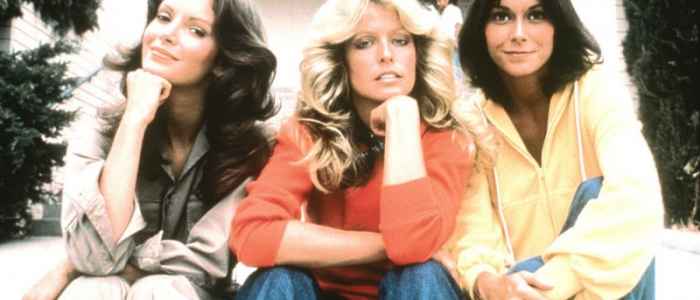
Of course gender barriers were not the only barriers that are being taken down on television. Another major barrier that was not spoken of until recently were sexuality barriers. In relatively all older television shows, they would only show the heterosexual relationships. During time periods such as the ’50s, ’60s, and ’70s, homosexual couples were not welcome in society. They were bullied for being different and not conforming to the expectations that society had for everyone, male or female. “Leave It to Beaver” only shows heterosexual couples, without even acknowledging homosexual couples; based off that, it’s clear to see that the ’50s was not a time to talk about, let alone even recognize, homosexuals. When women started to gain their momentum, homosexuals felt that it was their time to. In the ’80s television show “Nine to Five” the main character Bud discovers that his college girlfriend is dating another girl. This is just a small exposition of same-sex couples, but it illustrates how same-sex couples were slowly becoming more common on television because they were slowly becoming more common of the T.V. screen.
In the 1990s television shows began recognizing homosexuals by having homosexual characters on television. “My So-Called Life” included Enrique “Rickie” Vasquez, and openly gay character who Americans fell in love with. A more well known homosexual character is “Dawson’s Creek’s” Jack McPhee, who surprised the audience when he came out of the closet to his non-accepting father. Most people remember Jack McPhee, but a woman who came out as bisexual that almost every woman, and some men, know of is Samantha Jones from “Sex and the City.” Samantha Jones never wanted to settle down in a relationship, so why would she settle for her sexuality? A more modern television is none other that “Modern Family.” In this show, they feature a gay couple raising their adoptive daughter together. This is a huge step for our society; the characters of Cameron Tucker and Mitchell Pritchett have been used as examples of the new definition of a nuclear family in today’s society. Enrique “Rickie” Vasquez, Jack McPhee, Samantha Jones are just some of the bisexual and/or homosexual television characters that paved the way for society to recognize different types of couples such as Cameron Tucker and Mitchell Pritchett. This societal realization inevitably caused a change in the nuclear family definition. Nuclear families no longer only included heterosexual couples, but also started to recognize bisexual and homosexual couples.
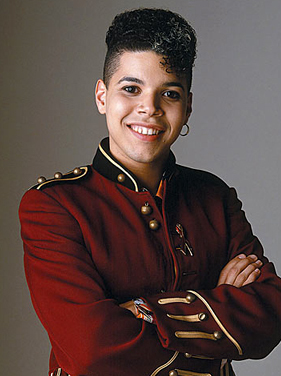
Even though sexuality barriers were not broken down until the late ’80s, interracial couples have not been frowned upon since the ’50s. One of the most well-known and comical television shows is “I Love Lucy.” Ricky and Lucy Ricardo are an interracial couple, which might seem risky during the ’50s with racism, but Americans fell in love with the wacky, lovable duo. Ever since “I Love Lucy,” people of other races have become more recognized and accepted in television. Shows that included interracial couples like “Shameless,” “Boy Meets World,” and “Scandal” all promote interracial couples. In “Modern Family,” the television show shows the audience a family that has a white father and a Hispanic mother; some may say that’s role reversal of “I Love Lucy.” This promotion of interracial couples has been around since “I Love Lucy,” also contributing to the definition change of the words “nuclear family.” During each of the televisions’ respective time periods, they reflect how we as a society have accepted interracial couples and marriages as a part of the nuclear family definition. Showing how interracial marriages and couples have been apart of television can lead someone to argue that interracial couples have been apart of our society for decades now and get the representation they deserve. Though most people do not shine a light on this topic, interracial couples have been on television for years and are still promoted in today’s society.
The Nuclear Family- What’s happened? What’s going to happen?
So, why has the nuclear family changed? Because it had to. The definition moved with the time and everyone knows, time waits for no one. The nuclear family has progressed with the decades that have come and go, and the definition will still change. Time will have new trends and brake down other barriers to help properly define the nuclear family. This definition, while new and more accepting, is not definite and no where near done. There are other families that need to be recognized on television that are still waiting. Families with no parents, with more than two parental figures, step-families, grandparent families, are just some of the other families that haven’t had their time slot on television; yet. Society is beginning to recognize families like these, so television will soon recognize these families too.
Let’s not forget that the nuclear family is still around; there are still men who bring home the bacon while the woman of the house cares for the housework and children. These families are not extinct by any means, but television has taken a turn to look into the lives of other types of families. Television shows that expose families run parallel with the families that become more mainstream and accepted in society. Since the 1950s, the nuclear family has been promoted on television, and that will never change. Even today, the nuclear family is still promoted in shows such as “Modern Family,” but the twist is that this is not the only type of family promoted; interracial and homosexual families are also promoted on this show, showing how nuclear families have changed.
Over the decades, the nuclear family definition has been tweaked, altered, and branched out to expose how families have changed with the times. Society has become a more accepting and open towards other types of families. “As seen on TV,” the nuclear family that we all know and love has become the foundation of what it is today – a more embracing and open family because of the societal changes that have taken place over the decades. The original foundation of the nuclear family will never change, but the acceptance and willingness to embrace other types of families. There is no one definition of family. Family consists of those people who love each other, who care for each other, and who can not imagine life without one another. In the recent decades, television has started to reflect how society chooses the family they want. Television is starting to reflect to numerous types of families society has embraced in the nuclear family definition. Every since the Cold War, the nuclear family definition has become a more embracing, open, and accepting word, allowing other types of families to be accepted in society, and therefore on television.
What do you think? Leave a comment.
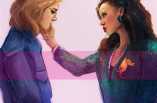
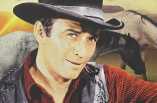
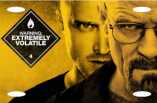
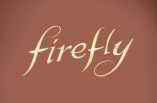
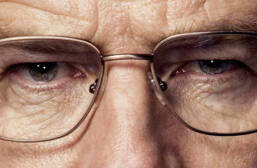
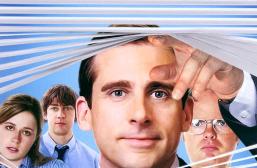
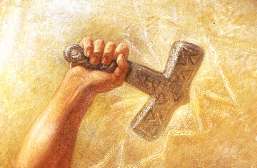
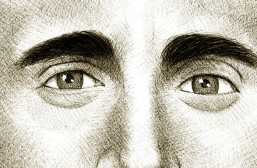

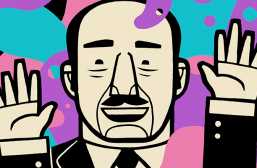
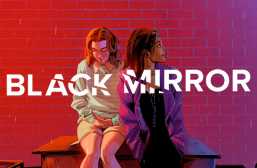
I prefer The Middle to any of these shows. It is much more down-to-earth and realistic. The characters of the parents and the youngest kid are eminently likable. The parents constantly try to do well by the kids and by each other.
The most “normal” or “real” families on TV in the last decade are the ones on the PBS Arthur cartoons.
I find myself relating to the various familial relationships and wacko situations on TV.
Call me shallow if you will, but I don’t want to watch families struggle on TV after a long and tedious day at work, and an evening largely spent doing chores. DVR saves me from grim realistic drama.
I’m certainly glad the trend seems to lean more toward embracing different ideas of family. I especially like the example you gave of interracial couples in television. It should be intriguing to see how the family unit is portrayed in future media. Great work!
I just don’t get the appeal of Modern Family. The characters are shallow and complacent in their richly endowed lives. Since we have just had a bout of introspection due to the Amy Chua episode, just observe how little the children’s education figures in the life of the family. Not even for school plays or sports! As if life is all about looking pretty and agonizing over non-issues.
Does TV HAVE to be anything other than entertainment?
Modern Family is a humorous take on the modern family. It makes me laugh (some of it at my own expense) and be thankful I don’t have teenagers yet!
A show based on my home life would be truly boring. I wouldn’t want to watch a TV show like my life!
I think Modern Family is the funniest show ever. I don’t try to analyze it, I just laugh out loud like never before! Total escapism from my usual obsession with tv.
The show is loaded with stereotypes galore which are wrapped in comedy. The comedy hides that the show is reinforcing some of the worst stereotypes and, in doing so, is maintaining the cultural control of the white patriarchal male. Other writers have pointed out some other stereotypes, but the absence of the middle-aged wife-mother who raised the family is shocking even if they did an episode vilifying her. Like all Disney movies, the mother is the villain or dead or just gone. Older women are invisible as are minority women–unless they fulfill the sexual fantasies of old men. This is probably the reason conservatives love the show. Too bad for women!
I really love the moving emotional moments that characterize Modern Family. There’s all sorts of realities out there. Out here.
I watch them all, and enjoy them all for different reasons.
Fun and insightful article.
Good job on touching on the different aspects of family in television! I think it would be interesting include some criticism on the stereotypes still portrayed, especially in regards to LGBT+ characters and interracial couples. Yes there have been changes in the past decade, but the portrayal is still an on-going issue.
Is the family on Modern Family like mine? Superficially, it is in a few ways. We are white. We have an adopted child. We have extended family members that are non-white (through marriage and adoption. Otherwise, no. They have a lot more money they we do, live in S. California (which is like another country to me) They’re all skinny, except Cam.
But I guess I really need to see an imperfect, but happy family.
Another interesting aspect of family on television was the Beverly Hillbillies. Jed Clampett single, raising a high spirited daughter.
What? No mention of the original reality tv show, “An American Family” (1973)? It documented an unanticipated divorce and an unanticipated coming out of a gay son. That series was a cultural landmark.
I love friends. We all want to live close to our friends and spend all our free time with them, letting them become our new family. Although I guess Friends probably wasn’t the first show to do that.
I’m 61 years old and familiar with most all these shows.
I’m of the mind that TV is often a slightly cracked reflection of society. If we take a look through it we see what was always there but didn’t quite see.
I found this useful for my college report!
These shows came from creative people who capitalized on a marketable concept. If they couldn’t sell soap, they wouldn’t have been on the air. And you sell soap by talking to people where they already are.
I watched each of those shows in their first run!
It is nice that the media portrays different types of families, but I think they could do a lot of good by showcasing good parents. Too often the father-figure is presented as a bumbling idiot and the mother is overstressed and overworked. Why can’t the media highlight families that we can learn from? For example, a TV family with parents that have good disciplining and communication skills could do a lot of good for new parents.
Yes! I concur! “Little House on the Prairie” was amazing in every way. So grateful it was the T.V. series our children grew up with!
I recently got a warm and fuzzy feeling from an episode of Supernatural, in which a woman referred to her wife without underscoring it in any way. That’s a show that has a fabulous representation of what family can be: two brothers fighting for each other and for the goodness of the universe. Sometimes I wish I had such a family.
I think while the semantics may change (heterosexual to homosexual/multicultural families etc.) the syntactics remain the same. Generally how a family oriented show works stays the same; the roles and stereotypes within the family are the same. Recently, inModern Family Claire has become the real breadwinner for the Dunphys. It even began to parody the switching of stereotypes with Claire the breadwinner and Phil the doting, trophy wife.
I enjoy that the idea of “family” is getting more complex and dynamic treatment on television.
I just can’t get into “Modern Family” though. Despite the better representation it showcases, it seems very shallow.
I like to think the change has been driven by how people don’t have distinct definitions of family, at least in my own experience with my peers. It’s not so much an acceptance and recognition of “alternative families” and traditional ones, so much as a fundamental shift in how we perceive family conceptually. In simplest terms, I think people recognize the fluidity and flexibility in how family can be defined.
I’m inclined to think this is a product of numerous issues intersecting (economics, disillusionment with the aforementioned nuclear family, changing attitudes towards LGBT culture, feminism, etc). While some seem to view this shift as mere political and social statements made by television creators, I think this is simply a reflection of our times. We’re seeing families change in television because we’re seeing them change in our own lives.
This was an interesting read! Thank you for this article.
Hmm I think you forgot to mention Married with Children 😉
When network TV started including homosexual couples/families on their shows, I was pretty stoked. But as time has gone by, it seems like most of those shows focus mainly on the stereotypical lesbian or gay rather than the real-life version. There are a few shows that are more realistic. I know it’s all “just TV,” but, as with any negative stereotype, we should keep in mind that we may be perpetuating discrimination against marginalized segments of society.
As someone who comes from a sort of unconventional family (i.e. not the original nuclear one) I’m glad that more shows are exploring that.
The idea of family has certainly changed since WWII and no one can deny the representation of that change in TV and Films. But to me the Modern Family for example is not so “modern”. The homosexual couple are mostly shown as two people living together, with no representation of any intimacy between them. Gloria and Clair (until recently) are stay at home mom’s who do the cooking and cleaning and are the prime caregivers.
The traditional nuclear family has been overdone in the media, I’m happy that alternative family types are finally being depicted on TV and in movies, even if we still have a long way to go.
But “alternative” families have been very popular since the 70s (“Diff’rent Strokes”), 80s (“My Two Dads”) and 90s (“Full House”) in sitcoms.
I really like how the idea of a family is changing today and reality is increasingly being reflected on screen. great article
You pointed out a few things that I never thought about. Good article.
As other commenters have said, what I like about today’s shows is not so much the type of families they portray, but that they do so realistically. I love Full House, Family Matters, and shows of their ilk, but no one in real life solves a family problem in 22.5 minutes (not counting commercials). I also enjoy shows that mix elements of family, such as the family you’re born into plus the one you choose (see 7th Heaven for an example not mentioned here).
I also applaud the diversity found in today’s family shows, though I think we can progress more. For instance, ABC’s Speechless is a big hit right now, but J.J. DiMeo is the only major sitcom character I have ever encountered with a disability (you’re still much more likely to see one-episode wonders touted as inspirations). We have Christian and Jewish families in clans like the Hecks, the O’Neals, and the Goldbergs, but will we ever have a Muslim, Buddhist, or Hindu family? We have single mothers, but it’s been awhile since I’ve watched a single father raise his kids (not since Danny Tanner, I think). I’d love to see more progress across more people groups–the plot and character ideas are endless.
I believe Modern Family has done one of the best jobs on television at combining both the classic idea of family with what today’s world sees.
I love modern family even though it is highly dramatised…it is a feel good show
Modern Family, while not my kind of show, definitely seems groundbreaking in its portrayal of family. I think this is a great move towards more inclusive tv.
A good essay.